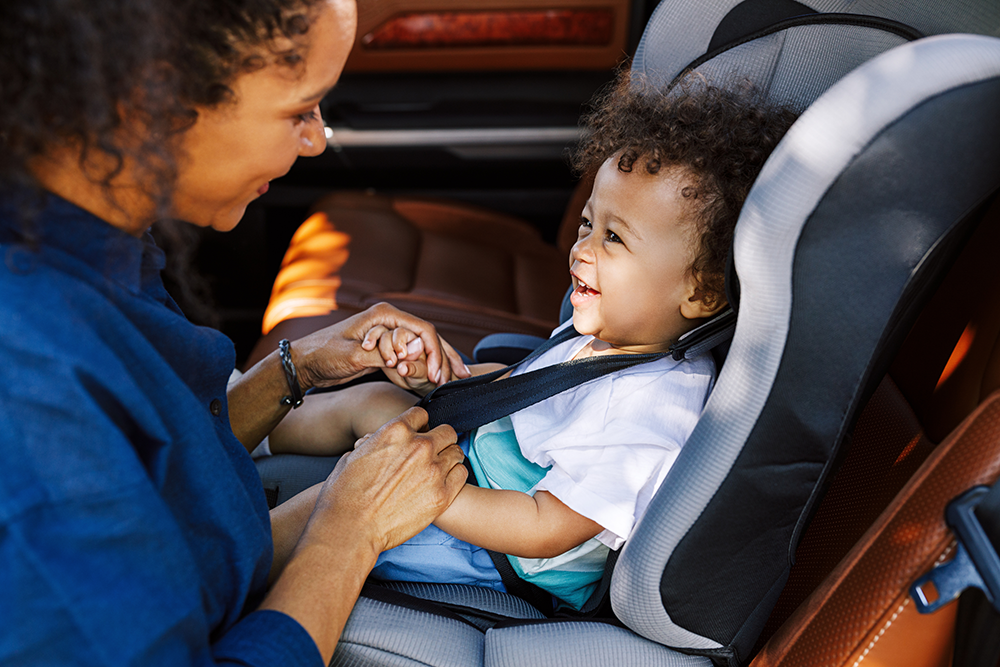Child safety seats: Protecting your precious cargo

My first safety seat hooked over the back of the front seat between mom and dad. It had a little plastic steering wheel, and in its center a red plastic horn button that when pressed “beeped.”
Neat as this seat was, its meager design and attachments wouldn’t have provided much resistance or protection for its occupant had our vehicle been in a collision.
Fortunately, child safety seats have come a long way; most offer considerable protection for the precious cargo strapped in them. However, this is true only when the child is actually secured properly. Three in four are not!
For help choosing the right car seat for your child, HealthyChildren.org offers valuable help from the American Academy of Pediatrics. The site also features a link that opens up a detailed list of car safety seats by manufacturer.
Car crashes are the number one killer of children one to 12 years old in the United States, according to the National Highway Safety Administration. Be sure that whether your toddler or youngster is traveling with you in your vehicle, with others in a carpool or however he or she goes along for the ride, they’re adequately secured in an age-appropriate safety seat installed correctly. If in doubt, be sure to offer your own approved child safety seat for your child when he is transported in others’ vehicles.
Today, all 50 states, the District of Columbia, Guam, the Northern Mariana Islands and the Virgin Islands require child safety seats for infants and children fitting specific criteria, notes the Governors Highway Safety Association.
For more on safety seat selection and requirements by age, weight and height, click to this site. It explains that proper child safety restraint happens in three stages: rear-facing infant seats, forward-facing child safety seats for toddlers, and booster seats for older children. Many laws require all children to ride in the rear seat whenever possible, and most states permit children over a particular age, height or weight to use an adult safety belt.
For good information about seat types, models and installation tips – and a link to local seat inspection stations, visit the National Highway Safety Administration’s Parent Central website.
Please note that many fire stations and state highway patrol offices offer free child safety seat inspections. Contact yours to find out if they do.
If your vehicle has been in a collision, any child safety seat in the vehicle at the time may no longer provide protection. Lack of visible damage to the seat or its restraints is not an indication if no damage to it has occurred. However, seats in minor crashes may still be safe, depending on whether the vehicle could be driven away from the crash, the vehicle door nearest the safety seat was not damaged, no occupant in the vehicle was injured, airbags did not go off, and there is no visible damage to the safety seat.
While certainly not the central reason for complying with these laws, note that violations get costly. First offense fines vary from $10 to $500. Some states also use driver's license points as an additional penalty for noncompliance. The following links provide additional helpful car-seat selection and installation information:
Article by Jim Leman, contributor to Sensible Driver. Write to jim.leman@sensibledriver.com.